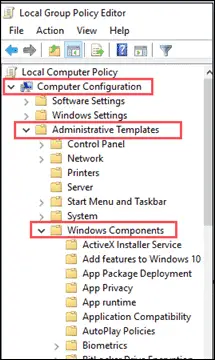
Select Windows Defender (from the left pane). Double click Microsoft (from the left pane). Double click Policies (from the left pane). Double click Software (from the left pane). Double click HKEY_LOCAL_MACHINE (from the left pane). Some users may find this step more complicated but the steps below have been broken down to make the process as easy as possible. In very few occasions, method 1 may fail to resolve the problem and this method provides an instant fix by modifying the registry key to remedy the situation. Method 2: Advanced Registry-edit Solution 
If the above steps do not resolve the problem, kindly use method 2 below to instantly fix the issue.
 Type Windows Defender in the search bar located at the top right corner. Now your Windows Defender should be enabled and running. If the above steps did not help in uninstalling the antivirus/spywares or other security programs, then follow this guide remove anti virus Restart your Computer by either selecting yes when the system prompts that it needs to restart to finish uninstalling the program or by pressing the Windows Key on your keyboard and then clicking restart from your power options. Confirm any additional prompts by selecting yes when the system asks if you are sure you want to uninstall the software. Search for the Antivirus program you intend to uninstall and click it. In order to do this, follow the steps below.
Type Windows Defender in the search bar located at the top right corner. Now your Windows Defender should be enabled and running. If the above steps did not help in uninstalling the antivirus/spywares or other security programs, then follow this guide remove anti virus Restart your Computer by either selecting yes when the system prompts that it needs to restart to finish uninstalling the program or by pressing the Windows Key on your keyboard and then clicking restart from your power options. Confirm any additional prompts by selecting yes when the system asks if you are sure you want to uninstall the software. Search for the Antivirus program you intend to uninstall and click it. In order to do this, follow the steps below. 
This problem can be solved by simply uninstalling any antivirus programs or software from the computer thereby making Windows Defender active as the only protection software of the system. The following methods provide steps on how to resolve this issue. The reason for this is that an antivirus software is currently installed and active on the computer and in order to avoid conflicting software operations, an antivirus software automatically disables Windows Defender. This is not really a problem as the software and the operating system have been intentionally designed in this manner.







 0 kommentar(er)
0 kommentar(er)
